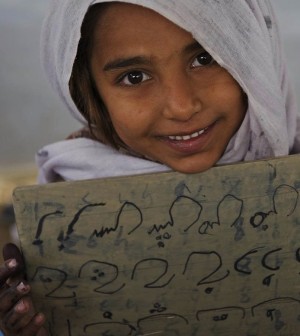- Finding Unshakable Power in a World That Wants to Pull Us ApartPosted 6 months ago
- What could a Donald Trump presidency mean for abortion rights?Posted 6 months ago
- Financial Empowerment: The Game-Changer for Women in Relationships and BeyondPosted 7 months ago
- Mental Health and Wellbeing Tips During and After PregnancyPosted 7 months ago
- Fall Renewal: Step outside your Comfort Zone & Experience Vibrant ChangePosted 7 months ago
- Women Entrepreneurs Need Support SystemsPosted 7 months ago
October 11: International Day of the Girl

via Unicef.
More girls are now entering school than ever before, thanks to inspiring progress over the past two decades. The gender gap in primary school enrolment has narrowed considerably.
However, many girls – particularly the most marginalized – continue to be deprived of this most basic right. Even as enrolment rates rise, completion rates for girls lag in a large number of countries. The picture worsens as girls reach secondary education.
There is overwhelming evidence that secondary education in particular can be a powerful transformative force, not just for girls themselves but for entire societies. Girls’ education is the one consistent factor that can positively influence not only the lives of girls , but virtually every desired development outcome: from reducing child and maternal mortality, to ending poverty and achieving equitable growth. The transformative potential of girls’ education has yet to be realized. By investing in girls, we are supporting them as powerful forces for positive global change.
But business as usual is not enough. To achieve our goals, we must be willing to do things differently and innovate. And everyone – from governments to the international and local communities and other allies – must renew and step up their commitments to girls’ education.
UNICEF marks this Day with the international community.
The International Day of the Girl Child is celebrated on 11 October, a day designated by the United Nations for promoting the rights of girls, and addressing the unique challenges they face. The inaugural day in 2012 focused on the issue of ending child marriage. As the lead agency for the Day, UNICEF, in consultation with other United Nations agencies and civil society partners, selected Innovating for Girls’ Education as this year’s theme, in recognition of the importance of fresh and creative perspectives to propel girls’ education forward and building on the momentum created by last year’s event.
As the nature and scale of barriers facing girls becomes more complex, innovative strategies are needed to give girls an education that prepares them for the challenges of the 21st century. As the world evaluates the gaps that still remain in achieving global goals for gender equality in education and defines an agenda that moves beyond the Millennium Development Goals, it is critical that innovation brings about solutions for improving girls’ education that are not only more creative, but also more effective, efficient, sustainable and just.






